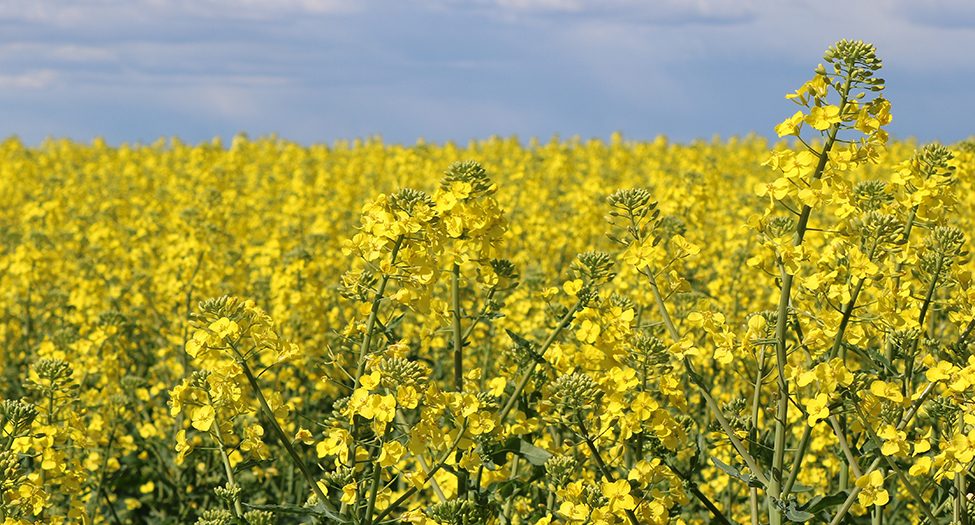
Home » Agriculture powerhouse: Crop value high amid trade threats
Agriculture powerhouse: Crop value high amid trade threats

June 12, 2019
Persistent issues with
international trade have been threatening Washington’s most successful crops.
Ongoing
trade issues with Asian markets and North American neighbors are “making
farmers nervous,” said Michelle Hennings, executive director of the Washington
Association of Wheat Growers.
“We
have to have trading partners,” she said.
With
$6.7 billion in food and agricultural products sent overseas, the Washington
State Department of Agriculture estimates about a billion dollars’ worth of the
state’s agricultural exports are at risk from retaliatory tariffs.
More
than 300 different crops are grown in Washington across nearly 36,000 farms,
which keeps Washington atop the list for growing the most apples, sweet
cherries, hops, Concord grapes, raspberries, blueberries and pears in the
nation.
In
addition to being one of the most productive growing regions in the nation,
Washington is known worldwide for its outputs, with a total value of $10.6
billion in 2017, according to the U.S. Department of Agriculture. This is up 4
percent year over year, but just shy of the $10.7 billion record set in 2015.
Apples
still command the top spot for all agricultural commodities in the state, with
a 2017 value of $2.4 billion. Toni Adams, spokeswoman for the Washington Apple
Commission, credits progressive growing techniques combined with automation and
high-density planting to maintain state dominance for its most famous crop.
Apples
make up just under a quarter of the state’s total agricultural value and more
than double the commodity with the second-highest value: milk.
The
demand for Washington apples remains strong and to stay successful, the
industry must export the fruit without restrictions.
“International
trade is a crucial component. Distributing worldwide helps stabilize domestic
supply and demand,” Adams said. The state’s apples are shipped to 60 countries
across the globe, with most going to Mexico.
A
20 percent tariff imposed in June 2018 was eliminated in mid-May but threats of
more retaliatory tariffs loom. Apple exports still face a 50 percent tariff in
China, and India is threatening to implement new tariffs, as well.
Adams
pointed to China as another market where retaliatory tariffs are hurting the
sale of Washington apples. Thanks to its growing middle class, China had become
the sixth largest consumer of the state’s popular fruit.
“People
there are willing to pay a higher price for a quality product,” said Adams, of
the state’s growing market share for international apple exports.
Washington
attributes much of its success for quality crops to diverse climates and rich
soils, but also its large-scale irrigation delivery system to harness water
flowing from mountains and rivers.
Irrigation
demands can be high for some varieties of wheat, a crop that moved forward two
spots recently to round out the top three agricultural rankings in the state,
according to 2017 USDA figures. The value of wheat rose 5 percent year over
year, to $691 million in 2017.
Washington
is not just known for its large-scale production of soft white and club wheat,
but also maintains a reputation for quality, with standards that can’t always
be replicated in Canada or Australia, which are also top wheat producers.
“We
don’t just make a lot of it,” said Scott Yates, director of communications and
producer relations for the Washington Grain Commission. But the price of wheat
is falling and trade issues have the potential to “devastate” the industry,
Hennings said.
The
industry is estimated to contribute $1.2 billion in production value to the
state’s economy and has created a trade surplus in the past. While Mexico is
the top market for American wheat overall, Japan is Washington’s biggest
consumer.
“They’re
Washington’s most devoted customer,” said Yates, who pointed out that Japan is
willing to pay a premium for top quality wheat.
A
staggering 90 percent of Washington wheat is sent overseas, with $532 million
in white wheat exported to spots like Japan, the Philippines and Indonesia.
Hennings said its lobbying group has traveled to Washington, D.C., a number of
times to educate the Trump administration on the impact trade issues are having
on Washington’s wheat industry.
Hennings
also cited “huge concerns” about the U.S. pulling out of the Trans-Pacific
Partnership with Japan and the trade cutoff with China.
“China
could be an emerging market, but we have zero wheat going there now,” she said.
Yates
said China bought $66 million in Pacific Northwest soft white wheat between
June 2017 and May 2018.
Because
of the tariffs, China is unable to buy any Washington wheat. Officials with the
Washington Grain Commission pointed out, “You can’t go any lower than zero.”
Wheat is primarily an Eastern Washington crop, with a
quarter of the state’s wheat production based in Whitman County, home to the
Palouse agricultural region.
Whitman
County produces more wheat than any other county in the U.S., according to the
grain commission, with no single county even producing half of what Whitman
County does as a dryland farming area.
Combined,
Adams and Walla Walla counties grow about a fifth of Washington’s wheat crop.
Benton and Franklin counties are less dominant producers of wheat, but
combined, still make up about 6 percent of the wheat grown in the state.
To
offset the challenges presented with the sale of wheat, some farmers have begun
a crop rotation with canola seed, which produces a vibrant yellow flower as it
grows.
“They’ve
told me that growing canola has made them better wheat farmers,” said Karen
Sowers, executive director of the newly-formed Pacific Northwest Canola
Association.
Sowers
said farmers who grow canola between their wheat or barley crops don’t just see
an economic boost, but usually find benefits like natural weed or pest control,
and an increase in their primary crop yield without the need to buy new
equipment to grow or harvest canola.
“The
current price of wheat is not doing anybody any favors,” Sowers said. “Farmers
tell me, ‘In four to five years, I make more money off my canola than my
wheat.’ ”
Production
of the state’s canola tripled between 2012-14. Based on the most recent USDA
data, the value of canola rose 64 percent from the previous year to $15.1
million. The 2018 USDA forecast is $20.2 million.
Nationwide
acreage dedicated to canola appears to be decreasing, but in Washington it was
up 7 percent year over year, with acreage predicted at 75,000 for 2019,
according to the USDA. Sowers said the number could be as high as 85,000 acres.
Either amount still would be the third-highest in the nation, behind North
Dakota and Montana.
Considered
an oilseed, canola generally is used for cooking oil, biofuel or livestock
feed. A canola seed processor in Warden has encouraged additional plantings of
canola by offering Eastern Washington growers a place to send the crop. Sowers
also cited the “intangibles” behind the recent boost in canola: “Farmers say it
does something to their wheat, ‘I don’t know what, but it does something.’ ”
While
many states rich in agricultural resources also are dense with industrial
farms, this is not the case in Washington, where 95 percent of the state’s
farms are family-owned, with a similar percentage having sales of less than
$250,000 annually.
Trade
issues aren’t just affecting agricultural conglomerates, but also smaller
farms, totaling fewer than 50 acres. Two-thirds of the state’s farms are below
this size.
While
Franklin County might hold the perception of the area’s agricultural hub,
Benton County boasts more farms than its neighbor, by nearly a 2:1 margin.
Combined, there are just under 2,400 farms across the two counties, which
doesn’t come close to the 3,100 farms in Yakima County alone.
Farming
and food processing employ more than 164,000 people across the state and
continued trade issues have the ability to affect local livelihoods for those
in the agricultural industry.
“Soft
white (wheat) exports are actually up over this time last year,” Yates said.
“But prices remain in the doldrums. I like to imagine where prices would be if
China was in the market.”
Agriculture + Viticulture
KEYWORDS focus agriculture viticulture 2019





